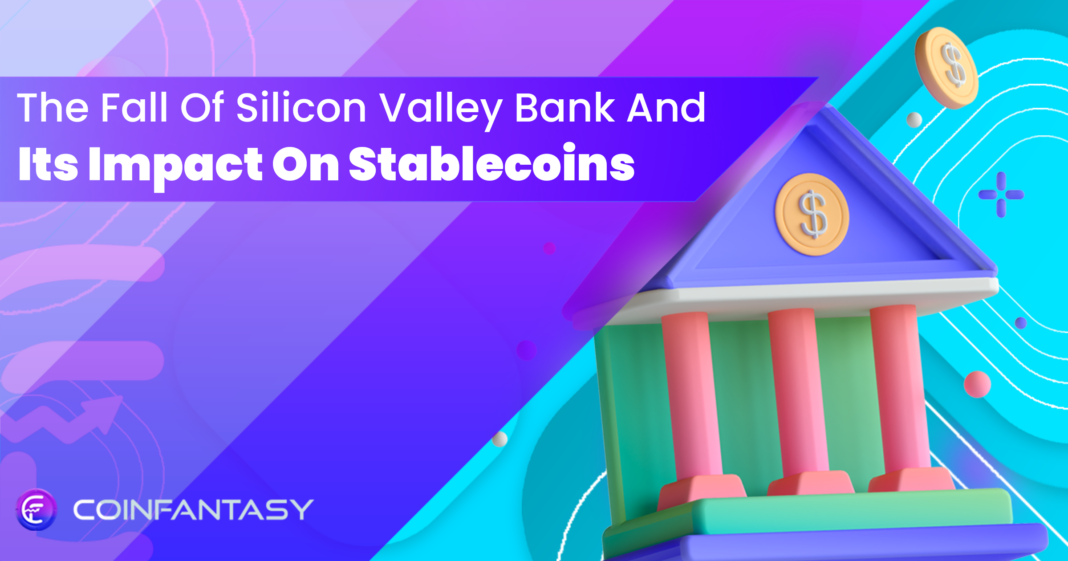The market for digital assets has just experienced a challenging year marked by several high-profile explosions. Three bank closures recently, Silicon Valley Bank, Silvergate Capital, and Signature Bank, all owned by SVB Financial Group, have brought on new strains.
Once digital asset behemoth Circle Internet Finance, the largest issuers of the most used tokens famed for their perceived safety, stated it had $US3.3 billion ($5 billion) of reserves with the bank, the fall of silicon valley bank had a ripple effect on the key stablecoin market.
Dramatic Fluctuations in Prices of Stablecoins Due To Silicon Valley Bank Collapse
Following the fall of Silicon Valley Bank on March 11th, the bitcoin market was in a state of chaos (SVB).
It has been a week, and this is the second failure of a crypto-linked bank. Janet Yellen, the secretary of the Treasury, met with the chiefs of the financial authorities shortly after the bank failed to discuss the matter. Because the cryptocurrency market doesn’t have a central bank like the Federal Reserve that can save it, the occurrence has raised questions about its stability.
The $1-pegged USDC stablecoin issued by Circle dropped to $0.89. At 03:49 UTC on Saturday, the USDC/USDT pair, which compares Circle’s coin to Tether’s larger coin, dropped as low as $0.89 on the Kraken platform.
The reserves that support stablecoins are what gives them their value. According to SVB, the second-largest stablecoin in the world’s reserves had around $3.3 billion locked up at the defunct bank. Because of this, USDC’s market value has fallen below $40 billion.
How Stablecoins Stand Vulnerable to Silicon Valley Bank Fall Despite Their Decentralized Nature?
The purpose of stablecoins like USDC is to maintain a predetermined value against another highly liquid asset such as the US dollar. They can take many different shapes, and some, like Circles, are supported by cash and bond reserves. As they switch between cryptocurrency deals, investors frequently keep money in stablecoins.
Last Friday night, as the USDC selloff grew worse, US-based cryptocurrency exchange Coinbase Global Inc. said that it would “temporarily pause” the exchange of USDC into US dollars for the weekend and resume it on Monday once banks open. “Your assets remain safe & ready for on-chain sends,” the crypto exchange claimed in a tweet from an official account.
DeFi applications, which allow users to trade, borrow, and lend coins and frequently rely on trading pairs involving the stablecoin, have been negatively impacted by the decline in USDC in the meantime. Last Saturday, DAI’s operating DeFi community recommended modifications to the system that keeps its stablecoin tied to $1 to lessen the exposure of USDC.
Teong Hng, CEO of cryptocurrency investment firm Satori Research, predicted that markets would be ugly again the following week unless a specific bailout plan was announced this weekend.
The TerraUSD token, also known as UST, attempted to maintain its value by combining algorithms and trader incentives with a sister coin, Luna. The $60 billion system failure increased regulatory scrutiny of stablecoins throughout the world.
Haohan Xu, CEO of institutional trading platform Apifiny said, “I believe the market overpriced USDC similar to how it overpriced USDT around the Luna collapse. Circle’s exposure at SVB and Coinbase shutting down its USDC convert function are the driving factors.” Traditional finance (TradFi) has been plagued by the issue of broken promises, and stablecoins like USDC have been hailed as a solution. However, recent events have revealed that stablecoins are also susceptible to market volatility.
Can CBDCs Be Shielded Against SVB Like Breakdown?
Central bank digital currencies (CBDCs), in contrast, have total sovereign support and are less likely to be exposed to the same vulnerabilities. As CBDCs are currently in the experimental stage, it is unknown if they will be made accessible on public blockchains. The de-pegging of USDC and the failure of SVB have highlighted the shortcomings of stablecoins and the need for more control and monitoring in the DeFi industry.
Final Note
After the $40 billion collapse of the TerraUSD stablecoin in May of last year, regulators have been closely monitoring the stablecoin industry. The most recent unrest increases the level of uncertainty for crypto investors and will amplify the cries for stricter regulation. In light of the fall of Silicon Valley Bank, Federal Reserve Chairman Jerome Powell’s remarks this week that he sees “turmoil” and “run risk” in digital currencies haven’t aged well.

